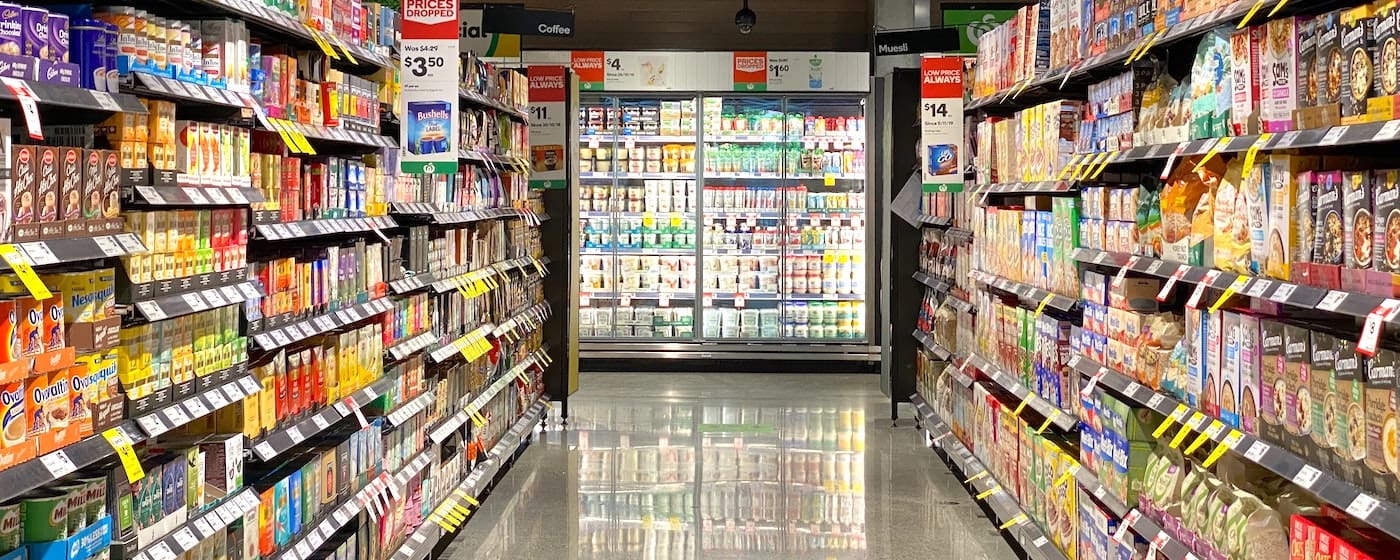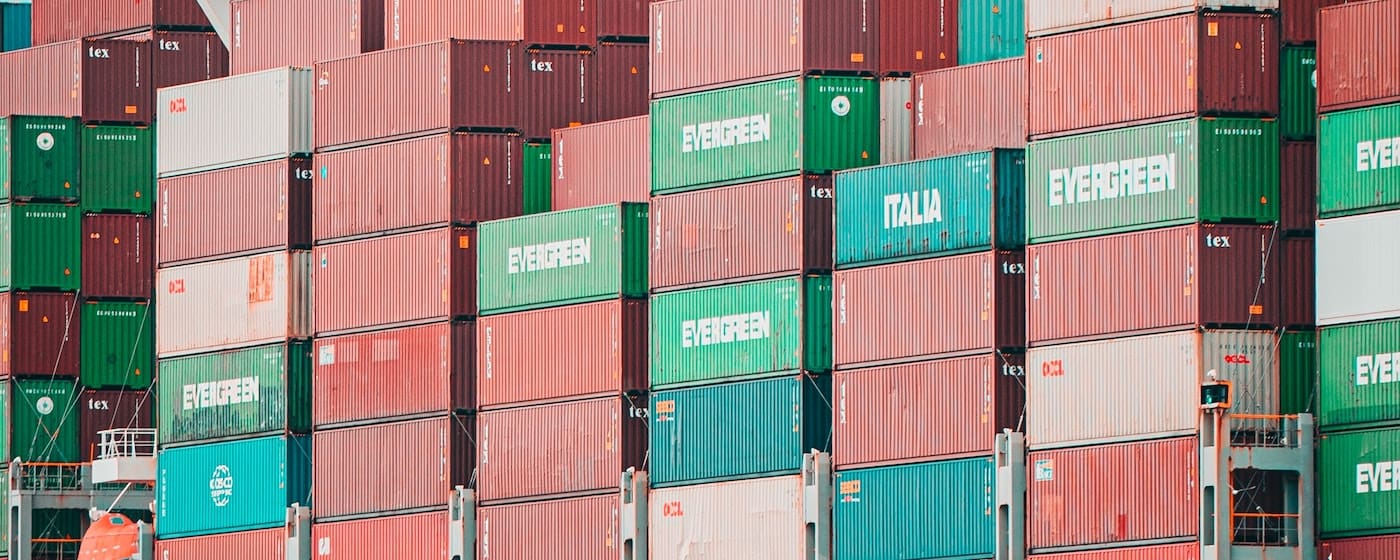Table of Contents
** Minutes
Demand management objectives & goals
Demand management process & strategies
Demand management case study: how Touchland used ShipBob to react to COVID demands
Demand management helps direct-to-consumer (DTC) brands maintain a continuous, customer-centric cycle of analysis and improvement.
By bringing demand management to the forefront, DTC sellers can become top performers (and top earners) in their industry.
Read on to learn the ins and outs of demand management — including what role it plays in your retail operations and how to implement your own demand management process.
What is demand management?
Demand management is a method for planning and forecasting demand for your products.
At its core, demand management creates better relationships between your operations and marketing teams. It also expands capacity to meet customers’ needs and adapt to changes in demand.
The most effective demand chain management strategy considers both marketing and supply chain management (SCM) strategies.
This way, retailers can analyse demand from several angles. For instance, trends and buying patterns, current (and future) production capacity, and other market competitors.
What role does demand management play?
Demand management plays a big role in helping your business achieve its goals and maintain a steady revenue stream. A well-executed demand management plan identifies dips in demand so you can make necessary adjustments to your business strategy.
For example, maybe you need to run new promotional campaigns or introduce product bundles to hype up customers and drive more sales.
The point is to look at things from the customer’s point of view so you can stay relevant and anticipate their needs. (Isn’t that what customer-centric retail is all about, anyway?).
Demand management also helps you make stronger and more accurate demand forecasts. When your forecasting has a high level of accuracy, you’re a lot less likely to run into stockout or overstock events — which is as good for you as it is for your customers.
On top of saving you money, accuracy also boosts customer satisfaction, since you’ll always have the products your customers are looking to buy.
But that’s not all — demand management has a big influence on supply chain management.
Demand management assists with looking for new markets or finding ways to improve your existing ones (based on the ebb and flow of demand). This analysis, in turn, supports SCM by helping you manage all your different sourcing, procurement, and manufacturing activities.
In other words, because demand management is used to plan future demand, it also tells you the amount of raw materials you’ll need to manufacture those goods.
Hopefully, this gives you an idea of how critical demand management is to your supply chain system — and the power it has to determine production workflows and materials required.
How has COVID impacted demand management?
It’s tough to overstate just how much COVID has impacted the world of retail, especially as it relates to ecommerce market conditions. When customers were unable (or uncomfortable) to shop in person, they didn’t hesitate to turn to online shopping instead.
According to the Annual Retail Trade Survey (ARTS), “ecommerce sales increased by $244.2 billion or 43% in 2020, rising from $571.2 billion in 2019 to $815.4 billion in 2020.”
That’s a pretty steep jump in such a short amount of time. And it certainly caught many retailers (and suppliers) off guard. The global supply chain was understandably overwhelmed, leading to a lot of delayed shipments.
Needless to say, even though sales increased exponentially, tons of revenue got left on the table. Worldwide, supply chain issues cost 30% of retailers an eye-watering $50 to $100 million, and another 20% of stores a sob-worthy $100 to $500 million.
On the slightly brighter side, all this lost revenue has caused ecommerce businesses to take demand management much more seriously.
Not only is there a fear of unforeseen events causing a spike in demand, but there’s also a desire to exceed customer expectations and deliver exceptional service with every order. And luckily, demand management is one of the best ways do that.
That’s because demand management is rooted in preparedness. So, it can really help your company get ahead of (or bounce back from) all the extremes going on with today’s supply chain.
Demand management objectives & goals
Successful demand management happens when you can predict (and fulfil) future demand for your products.
For your brand to do all that, there are a few strategic objectives demand management hones in on.
These objectives include supply chain forecasting, inventory and cost optimisation, better customer experiences, and efficient stock planning.
Accurate forecasting
The main goal of demand management is to improve forecast accuracy. In fact, when accurate inventory forecasting is achieved, it leads to all the other benefits listed below.
Demand management starts by looking at customer buying habits and purchasing trends to figure out where demand might be headed in the future.
With that said, the most effective demand management relies on both real-time and historical data to provide a complete picture of sales projections.
Many retailers use automated software to collect and store this type of inventory data (so they can reference relevant information at any given time).
Brands that master the art of demand planning and forecasting can gain a competitive edge in their product procurement. This make things easier for their supply chain operations down the road.
Inventory and cost optimisation
Another goal of demand management is to uphold cost and inventory optimisation.
By improving forecast accuracy, you can reduce the amount you’re spending on various inventory investments — like new products, for example.
Reliable forecasting optimises your cash flow by minimising safety stock levels and ensuring you don’t overspend on excess stock.
Demand management also ensures you only manufacture the products you need based on future demand analysis.
As a result of scaling back on manufacturing and production, you can reduce unnecessary spending and retain more of your profits simultaneously.
Better customer experiences
If you run a DTC brand, your customers are at the heart of everything you do. This means looking for ways to enhance the customer experience and maintain retention rates.
As we mentioned, the great thing about demand management is that it improves forecasting ability. And better predictions mean always having the right products in the right quantities in stock.
When this happens (and your stock levels are where you want them), you’ll be able to reduce stockouts and avoid selling on backorder.
Think about it: If you have enough available stock to meet demand, you can fulfil orders in real time and shorten your delivery windows by a big margin.
Customers love this type of service — fast and efficient. And when this is what they get, they’re more like to shop again with your store.
More efficient stock planning and warehouse management
Because demand management helps you distribute inventory based on locational demand, this process can do wonders for your stock planning and warehousing efficiency.
Essentially, demand management finds a balance within the supply-and-demand lifecycle, so you can minimise overstocking and prioritise your most profitable products.
Say, you’re using reliable inventory data to inform your demand management. Then, you’ll order the right amount of SKUs at exactly the right time. It’s that simple!
Plus, demand management ensures you give yourself plenty of lead time when replenishing inventory and materials at your warehouse. In doing so, you can avoid potential gaps in order fulfilment and keep up with any changes in consumer demand.
Demand management process & strategies
Even though demand management has several clear-cut objectives, it’s not necessarily easy to carry out.
That’s why it’s so important to implement demand management strategies and business processes to help you reach your goals faster (and more efficiently).
Collect data and model accordingly
The best way to collect customer, inventory, and order data is with the help of proficient operations software. A modern operations system will store all your brand’s data and analytics in one convenient place, so you’re not searching for it.
With this extensive data at your fingertips, you can create a demand model of consumer behaviour, which can be super helpful when it comes time to generate your forecast predictions.
In short, a demand model helps predict future buying trends based on an analysis of past experience.
How? By looking at the likelihood a customer will purchase a product and how a price change may affect their outlook on that product.
Forecast demand with predictive analytics
Speaking of forecasting, after you’ve collected and aggregated your data (and spent some time developing a data model), you can use historical information to help make better decisions.
The most effective forecasts leverage predictive analytics to anticipate future demand for everything you sell.
By definition, predictive inventory analytics use statistics and modeling techniques to predict future product performance based on a combination of current and historical data.
Admittedly, that’s a bit of a mouthful. But basically, predictive analytics influences forecasting. That way, you make supply chain decisions that’ll positively impact your sales beyond the short term.
Plan inventory using forecast results
You can plan your inventory for future weeks, months, or years using your forecasting results.
Otherwise known as the inventory planning process, this stage of demand management is when you decide exactly what (and how much) stock you need to reorder.
But more than that, planning your inventory involves figuring out where you’ll source your raw materials and determining what type of manufacturing schedule you’ll follow.
These details ensure your inventory levels can meet customer demand without creating a surplus of unsold goods.
In that way, inventory planners have a big impact on your bottom line, too.
Write and execute a supply chain plan
Once the inventory planning process is complete, you can write and execute a supply chain plan for manufacturing and distribution.
The goal of supply chain planning is to identify problems with your supply chain operations, like fulfilment bottlenecks or production delays. When you tackle these issues head-on, you can better optimise your inventory costs to meet customer expectations.
By prioritising supply chain forecasting, you’ll also set yourself up for shorter lead times as accurate data can help make informed decisions on inventory replenishment.
More simply, there are fewer errors (and less back and forth) while you’re talking with your suppliers and manufacturers, so production lead times are kept to a minimum.
Demand management case study: how Touchland used ShipBob to react to COVID demands
As you already know, COVID has had an undeniable impact on demand management for retailers around the world. The truth is, COVID threw countless businesses off balance — especially those without the right tools and resources to respond to such massive changes in demand.
Very few companies had the software to help them through these production and fulfilment challenges.
But fortunately for Touchland, their choice to work with ShipBob meant they could navigate a huge surge in demand brought on by the pandemic.
Touchland’s innovative line of hand sanitisers saw incredible demand at the onset of COVID.
Although Touchland had been working with ShipBob since 2018, this partnership reached a new level by spring 2020. With the help of ShipBob, Touchland could handle a tremendous influx of orders with amazing ease and efficiency.
In just a few weeks, Touchland’s business grew by 1,200%. But because they’d teamed up with ShipBob, all their orders were picked, packed, and shipped with *unprecedented* speed.
What’s more, ShipBob was able to accommodate Touchland’s need to ship via ground transportation (since their products are flammable in nature).
This arrangement was also super handy whenever bad weather popped up — ShipBob had multiple locations. If bad weather disrupted a fulfilment location in one area, inventory could be fulfiled in a secondary location without causing last-mile delivery delays.
“We sell flammable goods that need to be shipped via ground, so ShipBob has been a great ally as they have fulfilment centres all over the US, facilitating a 2-3 day delivery time for any customer in the US. This is helpful especially when weather challenges happen; being able to have different locations to ship from allows for a more seamless supply chain.”
Andrea Lisbona, Founder & CEO of Touchland
ShipBob & Cogsy take the legwork out of demand management
Curious how to improve demand management without putting a lot more work on your plate? ShipBob and Cogsy can help!
When retailers use ShipBob and Cogsy together, they’ll do the heavy lifting of demand management and decision-making on your company’s behalf.
The integration with ShipBob and Cogsy gives DTC retailers access to real-time metrics to continuously monitor their stock levels against demand. These metrics are updated around the clock, which allows you to forecast production (and demand) for greater inventory accuracy.
More specifically, ShipBob’s proprietary fulfilment platform helps you stay on top of increased demand by simplifying the demand forecasting process and tackling all the challenges associated with inventory and fulfilment.
ShipBob’s omnichannel fulfilment platform automatically tracks real-time inventory and fulfilment data for you, removing all that tedious spreadsheet legwork.
From there, Cogsy steps in to help make sense of this data, so you can discern what these numbers are trying to tell you. Cogsy uses automation ti transform your static data into robust, actionable insights that’ll inform your forecasting and production.
Ready to elevate your demand management with the help of advanced software solutions? Request a quote from ShipBob to get started and to learn more about partnering with Cogsy.
Demand management FAQs
Got lingering questions about demand management? We’ve got answers.
What are some forecasting techniques?
When it comes to demand forecasting, there are a few different techniques companies can choose to assist with this process. Among the most popular techniques are passive demand forecasting, active demand forecasting, short-term projections, long-term projections, external macro forecasting, and internal business forecasting.
How can ShipBob help me with my demand management?
ShipBob’s fulfilment platform includes built-in inventory management tools to help retailers with the demand management process. ShipBob’s technology makes it easy to track key inventory and fulfilment metrics, so you can stay on top of increased demand by simplifying the forecasting process. Using ShipBob’s technology, you can avoid tedious spreadsheets and enjoy smoother forecasting and fulfilment operations without being involved in the day to day.
What is supply chain management?
Supply chain management (SCM) is the centralised management of products and services as they flow throughout the supply chain. Put simply, SCM encompasses all the processes that transform raw materials into finished goods. When done well, supply chain management helps retail brands deliver products faster, more efficiently, and with far less overhead costs.



